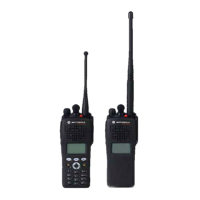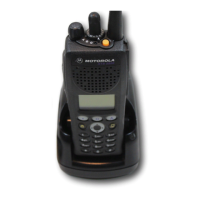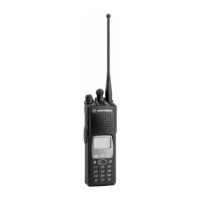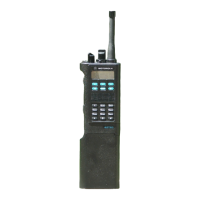Radio Alignment Procedures
27
Left-click the Close button on the screen to return to the Transmitter Alignments
menu.
Transmit
Deviation
Balance
Alignment
This alignment procedure balances the modulation contributions of the low- and
high-frequency portions of a baseband signal. Proper alignment is critical to the
operation of signalling schemes that have very low frequency components (for
example, DPL) and could result in distorted waveforms if improperly adjusted.
This procedure needs to be performed at multiple frequencies to allow for proper
alignment across the entire RF band. The RF band is divided into frequency zones
with a calibration point (value) in each zone.
NOTE: This alignment is required after replacing (or servicing) the
VOCON board or the transceiver board.
Proper alignment requires a modulation analyzer or meter with a frequency
response to less than 10 Hz modulating frequency. The modulation analyzer
settings during this test should be set for average deviation, a 15 kHz low-pass
filter, no de-emphasis, and no high-pass filter, if these settings are supported.
This test can be done with either the R-2670 Communication Analyzer or the 8901_
Series Modulation Analyzer. The method of choice is the R-2670 analyzer.
Figure 9. Transmit Power Alignment Screen (Typical)

